News
Showing 1 - 25 of 219
219 results found

The first-ever formal loan program for artisanal miners in #BurkinaFaso 🇧🇫 launched earlier this year through a collaboration between the planetGOLD project and

Persistent Organic Pollutants (POPs) are our "Worst Friends Forever" (WFF). These organic chemicals persist in the environment for extended periods, spreading through air, water, and soil. They accumulate in living organisms and pose significant toxic risks to both humans and the environment.
To combat these dangers, scientists and governments have united under the Stockholm Convention. This collaboration aims to monitor these pollutants and safeguard human health and the environment from their harmful impact.

The whole is greater than the sum of its parts.
The GEF funded Mediterranean Sea Programme (MedProgramme) is more than a collection of projects; it’s a powerful force for change, bringing together countries, partners, and sectors to drive environmental progress.
At the Third Annual Stocktaking Meeting (ASM) in Istanbul, Türkiye, participants gathered to reflect on achievements, share knowledge, and explore new ways to amplify impact under the theme “The MedProgramme: Greater than the Sum of its Parts”.

For much of the last decade, Somalia has tipped in and out of drought, with dry spells withering rivers, turning farms into dustbowls and forcing millions from their homes.

With waves rippling from its bow, a small motorboat shoots across the languid Gambia River, the rat-tattle of its outboard motor echoing out across the waterway.

This week, delegates from around the world will gather in New York City to discuss what has been called one of the most important environmental accords in recent history: the Agreement on Use of Marine Biological Diversity of Areas Beyond National Jurisdiction (

The sun has set in Johannesburg, South Africa and Nntuthuzelo Ndwandwa, 39, is returning home from her job as a customer care consultant. When once she would have glanced nervously into the shadows, now she walks through a complex illuminated by solar-powered lights and enters her home, where a solar-powered heater doles out warm water for washing up.

Uşak, a city of 500,000 residents in western Türkiye, is famous for its brightly coloured wool rugs, known as kilims. Once made largely by hand, today the tapestries are created by a battery of machines.
While it is faster than hand-weaving, the equipment has a downside. It is driven by power-hungry electric motors, many of which are decades old and inefficient.

Women make up 30% of the global artisanal and small-scale gold mining workforce, and they have critical roles to play in the movement to #MakeMercuryHistory & to safeguard communities from unsafe mining practices. Projects in the planetGOLD programme promote the participation and advancement of women who choose to work in this mining sector in order to provide for themselves and their families.

As the planet warms, the fallout from climate change – from droughts, to floods, to superstorms – is getting worse. But not everyone has felt the pain equally. This imbalance is tied to longstanding inequalities: women often shoulder more domestic care responsibilities, have less access to resources, such as land or credit, and are underrepresented in decision-making spaces.

Dar es Salaam, 26 February 2025 – The governments of Burundi, the Democratic Republic of Congo, Tanzania and Zambia have launched a five-year project to assess and address transboundary threats to the biodiversity of the Lake Tanganyika Basin. The initiative will protect core conservation zones in three identified protected areas and promote sustainable natural resource use in protected areas and their buffer zones.

In the heart of the Indian state of Rajasthan, two farmers - Devaram from Jeoli village, Nechwa, and Hanumana Ram from Sulkhaniya village, Ratangarh - are leading the way in conserving traditional landraces of pearl millet.

Miriam Abarca is standing on a wooden platform overlooking the Cahuil Lagoon, a small, salty pine-fringed body of water on Chile’s central coast. In the distance, birds weave through waist-high reeds and tourists paddle a rowboat over the lagoon’s placid surface.

December 20, 2024 - The Global Environment Facility (GEF) has announced a commitment of $99.8 million in funding for UNEP initiatives aimed at delivering substantial environmental benefits. This funding, announced during the 68th GEF Council, will support projects focused on addressing the crisis of climate change, nature and biodiversity loss and pollution and waste.

Nestled in the heart of Hubei Province, China’s Shennongjia National Park has become a beacon of hope for conservationists, nature lovers and those dedicated to restoring the delicate balance of ecosystems.

At dawn, Dorothy Mae Dumawal strolls past a fleet of electric three-wheeled vehicles charging at a government-owned parking lot in Pasig City, Philippines. In a short while, the vehicles, which belong to the Philippine Postal Corporation, will set off on mail runs across bustling Pasig City, part of metro Manila.



In a Nairobi hotel last week, models strode down a runway to promote the idea of reuse in fashion. Clad in upcycled looks created by emerging designers, the show focused on avoiding new production and repurposing items already in circulation.

Honorine Rasoamampionona looks after a tree nursery in Sakaivo Nord, a village in Madagascar's Central Highlands. She spends her days tending to saplings, carefully sprinkling them with soil, fertilizer and water until they are mature.
Once they are big enough, the trees are plucked from the ground and replanted in areas blighted by deforestation, creating future habitats for Madagascar’s unique wildlife.

In San Ramón, Bolivia - an area known for its biodiversity and tropical climate - the planetGOLD project is partnering with women miners to provide training in gastronomy, helping them to incorporate cooking businesses as an alternative source of income for themselves and their families. The course is grounded in the Manq'a approach of using locally sourced ingredients.

Monterrey, 20 November 2024.- Mexico's Secretariat of Environment and Natural Resources (SEMARNAT) is joining forces with the United Nations Environment Programme (UNEP), the United Nations Industrial Development Organization (UNIDO), the Global Environment Facility (GEF) and other partners in a new project to eliminate the use of mercury in the chloralkali sector to protect human health and the environment while promoting sustainable industrial practices.

As funding the climate challenge takes center stage at COP29 in Azerbaijan, the Global Environment Facility (GEF) has announced the latest winners of its Challenge Program for Adaptation Innovation, with $20 million in grants awarded to projects that will reimagine climate adaptation finance.


New contributions from Austria, Denmark, France, Germany, New Zealand, Norway, the United Kingdom, and Québec announced at COP16.
The support from Québec is the GBFF’s first pledge from a sub-national government.
The GBFF now has 12 contributors including Canada, Japan, Luxembourg, and Spain.
Showing 1 - 25 of 219



